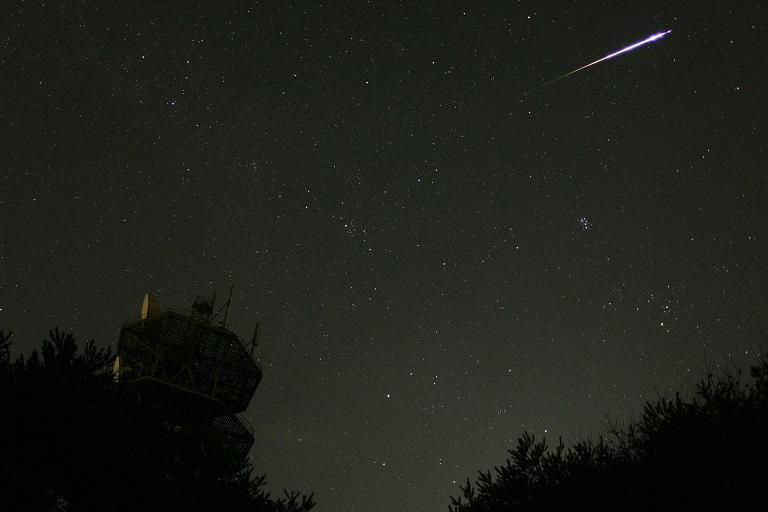Science News
2010's Best Meteor Shower?
August 9, 2010

Every August 12th, Earth passes through the trail of dust left behind by Comet Swift-Tuttle. As particles of dust rain through the atmosphere and burn up, observers on the ground are treated to one of year’s best displays of “shooting stars,” or – more properly – meteors.
Observed annually for about 2,000 years, the Perseid shower qualifies as one of the most spectacular of the many meteor showers occurring during the year, with an average rate of 50-60 meteors per hour, compared to 5-15 per hour for many other showers. Because the shower takes place during the summertime, when more people are inclined to be out late at night, the Perseids are one of the best-known displays of celestial fireworks. This year, the peak of the shower coincides with a very young crescent Moon that sets early in the evening. Skywatchers observing during the recommended early morning hours won’t have to worry about interference from moonlight, making viewing conditions ideal.
To best observe the shower (weather-permitting), skywatchers should plan for the midnight-to-predawn hours of both August 12th & 13th. Select a viewing site away from bright lights and with as much of a view of the sky as possible—atop a high hill with no obstructions (such as trees or buildings) along the horizon works best. Meteor-watching isn’t a quick activity that one can do in just a few minutes—it takes time and patience (a lawn-chair, sleeping bag, or even a blanket on the ground make for comfortable viewing). Allow at least 20 minutes for your eyes to adapt to dark conditions so that you can spot fainter meteors (getting away from bright lights helps considerably).
Although Perseids are often described as being fast and bright with some glowing trails, don’t expect a regular, evenly-spaced stream of fireballs to streak predictably across the sky. Meteors may occur at irregular intervals or in bursts, and many will appear quite faint – often, seeing them is simply a matter of looking in the right direction at the right time. That’s why you should seek out a wide-angle view of the sky. In addition, although meteor showers are named for the constellations from which meteors appear to radiate, meteors can appear anywhere in the sky. It’s simply the effect of perspective that makes meteor paths seem to converge at a point within a single star pattern.
Estimates of the number of dust particles that strike Earth vary, but some astronomers calculate that our planet sweeps up between 37,000-78,000 tons of space debris every day, although most debris takes the form of dust-sized particles too small to survive the fiery journey to our planet’s surface.
For more info, check out these top 10 facts on the Perseids, read more about their history or watch Tom Hanks being hit by a meteor while talking about the Perseids on the Tonight Show last year (about 10:53 in, with Turkish subtitles).